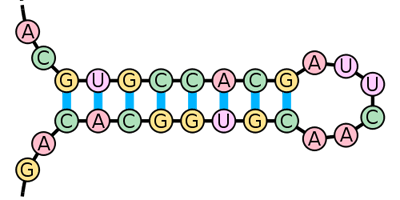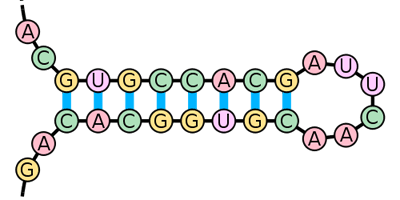Thermal Cycling Drives a Fast RNA Replicator
The steps by which molecules in the primordial soup came together to form the genetic backbone of life are largely unknown. One approach to finding out is to artificially create basic life functions in the laboratory and consider if such conditions might have been possible in the Earth’s past. Writing in Physical Review Letters, Hubert Krammer and colleagues at the Ludwig Maximilian University of Munich in Germany show they are able to drive the replication of segments of tRNA (transfer ribonucleic acid), the molecule responsible for translating genetic code into the production of specific proteins, using a purely thermal process.
Krammer et al. begin by rapidly cooling a solution of four halves of tRNA from high temperatures to so that the molecules form hairpins—a state where the strand forms a closed loop on itself, except for a snippet of a sequence of bases, called a “toe hold.” It is this toe hold, which, in principle, carries enough information to encode a protein, that the authors try to protect and replicate by using a thermal process to coax the hairpins to open and pair to a complementary strand. When Krammer et al. thermally cycle the solution between and , the energy stored in the hairpin (which prefers it to bind to a complementary pair instead of itself) compensates for the loss of entropy associated with the molecules pairing up with their partners.
This thermally driven process occurs on a relatively fast time scale of about seconds, an important factor since molecules need to replicate faster than they degrade. According to the authors, convection currents in prebiotic liquids could have provided the necessary quenching and thermal cycling. – Jessica Thomas





